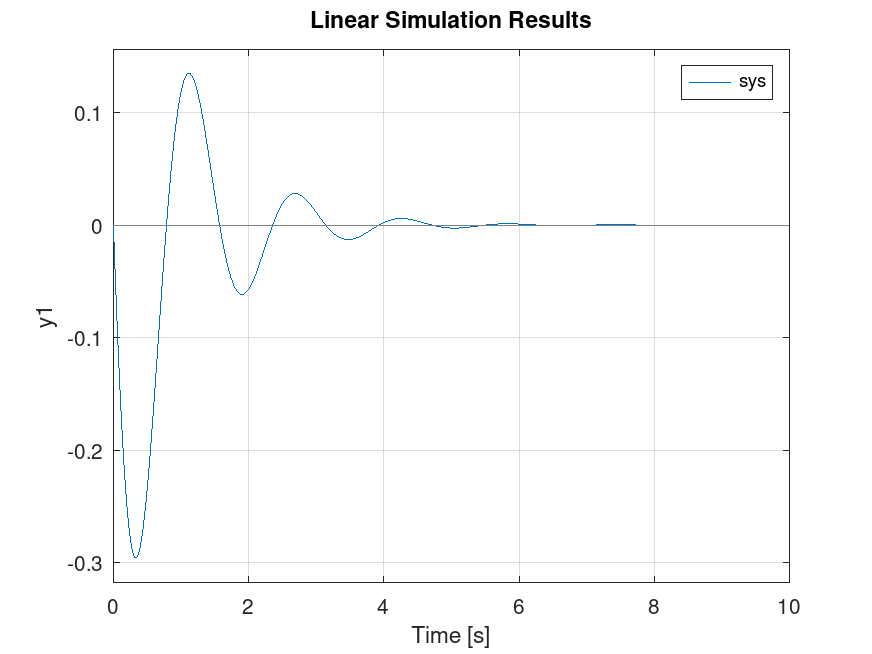Categories &
Functions List
Function Reference: lsim
- Function File: lsim (sys, u)
- Function File: lsim (sys1, sys2, …, sysN, u)
- Function File: lsim (sys1, 'style1', …, sysN, 'styleN', u)
- Function File: lsim (sys1, …, u, t)
- Function File: lsim (sys1, …, u, t, x0)
- Function File: [y, t, x] = lsim (sys, u)
- Function File: [y, t, x] = lsim (sys, u, t)
- Function File: [y, t, x] = lsim (sys, u, t, x0)
Simulate LTI model response to arbitrary inputs. If no output arguments are given, the system response is plotted on the screen.
Inputs
- sys
LTI model. System must be proper, i.e. it must not have more zeros than poles.
Vector or array of input signal. Needs length(t) rows and as many columns
as there are inputs. If sys is a single-input system, row vectors u
of length length(t) are accepted as well.
Time vector. Should be evenly spaced. If sys is a continuous-time system
and t is a real scalar, sys is discretized with sampling time
tsam = t/(rows(u)-1). If sys is a discrete-time system and t
is not specified, vector t is assumed to be 0 : tsam : tsam*(rows(u)-1).
Vector of initial conditions for each state. If not specified, a zero vector is assumed.
Line style and color, e.g. ’r’ for a solid red line or ’-.k’ for a dash-dotted
black line. See help plot for details.
Outputs
- y
Output response array. Has as many rows as time samples (length of t) and as many columns as outputs.
Time row vector. It is always evenly spaced.
State trajectories array. Has length (t) rows and as many columns as states.
See also: impulse, initial, step
Source Code: lsim
Example: 1
clf;
A = [-3 0 0;
0 -2 1;
10 -17 0];
B = [4;
0;
0];
C = [0 0 1];
D = 0;
sys = ss(A,B,C,D);
t = 0:0.01:10;
u = zeros (length(t) ,1);
x0 = [0 0.1 0];
lsim(sys, u, t, x0);
|
